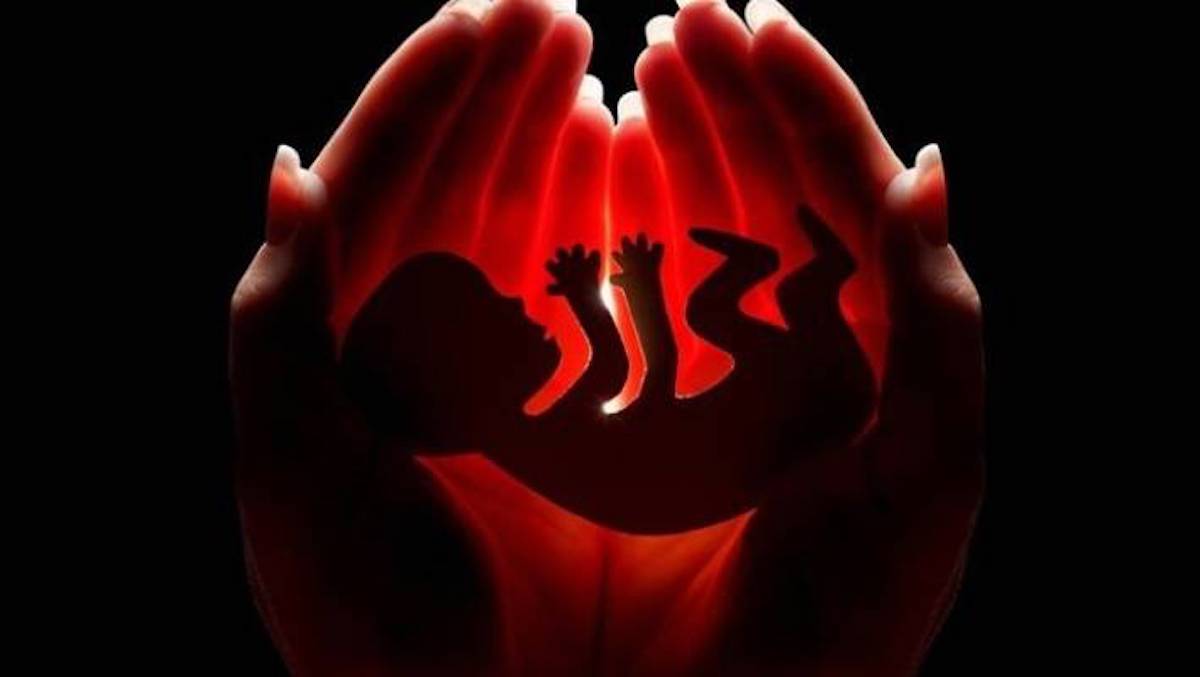OPINION
Ming

“For you formed my inward parts;
PSALM 139:13
you knitted me together in my mother’s womb.”
It is not a controversial fact that life begins at fertilization.1 For instance, a Princeton University webpage lists fifteen academic sources that support this point. One of the quoted sources clearly states that “fertilization is a critical landmark because, under ordinary circumstances, a new, genetically distinct human organism is thereby formed”.2 An article from PubMed states that “Biologists from 1,058 academic institutions… assessed survey items on when a human’s life begins and, overall, 96% (5337 out of 5577) affirmed the fertilization view [human life begins at fertilization]”.3 I could go on.
So, the abortion debate is now centred on philosophical considerations. One case study will do. Peter Singer, Emeritus Professor of Bioethics at Princeton, answers whether he would save a mouse or human being from a fire: in “almost all cases [he] would save the human being”. Interestingly, the reason for this saving is “not because the human being is human” but because “it matters whether a being is the kind of being who can see that he or she actually has a life — that is, can see that he or she is the same being who exists now, who existed in the past, and who will exist in the future”. Singer’s criteria for something that is worth saving involves some kind of temporal awareness. To explicitly connect this answer to abortion, “no newborn baby is a person” because newborn babies do not have “a sense of the future”.4
The aforementioned PubMed article provides a useful framework for understanding Singer’s pro-abortion position. The article’s author applies the is-ought fallacy. This fallacy occurs when one argues from a mere “is” to an “ought”. For instance, when somebody merely argues from a fact (“Pineapple is on this pizza.”) to an ethical obligation (“Pineapple ought to be on this pizza.”), they have committed the is-ought fallacy. So, the pro-life position may commit the is-ought fallacy in saying that because life begins at conception, the fetus ought not to be aborted. Singer would argue that we ought not to abort the baby when it is a person, not whether it possesses mere biological life. There is no wonder, based on this idea of personhood, that Singer, in some cases, would support euthanizing disabled babies postbirth.5 He has hence been hailed as “Professor Death”.
Nancy Pearcey, an evangelical apologist and philosopher, sings a different tune to personhood theory. Adapting an idea from Francis Schaeffer, her magnificently goateed and philosophically astute mentor, she discusses the upper and lower stories. The upper story is where we place moral judgements, aesthetic labels, and so on. This story is the “ought” we mentioned previously. The lower story is the “is” we mentioned: stuff like science, empirical data, and so on. So, the pro-abortion side has stuffed the biological fact that life begins at fertilization into the lower story and personhood into the upper story. The pro-abortion side sticks a philosophical label on a biological fact and yells hurrah for abortion. After all, the living thing (whatever it may be called) is not a person.6
This personhood theory, which justifies abortion based on whether the fetus is a person, to use the understatement of a millennium, is problematic. A significant problem with personhood theory is its sheer arbitrariness, a cardinal sin in philosophy. As my high school Bible teacher once wrote on a whiteboard: “Who seyz [sic]?”. If I say that there is an invisible leprechaun running on Mars eating a steak and mushroom pie, then why on Mars should you believe me? The leprechaun claim is arbitrary, for no justification is provided for it. Singer says that the criteria for personhood is an ability to reflect on one’s existence: a person recognizes that they have a life and continuity of identity throughout time. But why should personhood be based on that? Why should it not be based on how fast you can run five kilometres, how well you can boil an egg, or, to use something more recognizable and sinister, one’s race or skin colour?
Personhood theory arbitrarily renders the body and soul asunder. It separates the physical and the non-physical, for it teaches that one can be a living human without being a person. Biblical Christianity refreshingly recognizes no such thing. Each living human is made in the image of God (Genesis 1:27), knitted together in his or her mother’s womb (Psalm 139:16). There is no arbitrariness, for it is God who endows both body and soul with value. Christians have hated abortion because Singer and other advocates support a symphony consisting of mangled limbs and departed souls, justified by sheer bad philosophy. God, the Grand Conductor, conducts a different symphony; hence, Singer is out of tune.
A final reflection must be made. Suppose you are not a Christian. You are pro-abortion. Consider the arguments here. Reckon with the sheer arbitrariness of Singer’s view. Or you are a conservative but not a Christian. Regardless of your background, you oppose abortion. Singer’s personhood theory is intuitively wrong, yet you cannot articulate a response. Paul wrote of God’s law written on our hearts (Romans 2:15), which applies to all men, Christian or not. That is how you know abortion is wrong.
But this same apostle wrote a chapter later that we have all sinned and do not meet God’s requirements (Romans 3:23). Bitter polemics or rhetoric will not win the war against abortion. The war begins within our hearts as we turn from our sin to Christ in repentance. In light of this repentance, we shall fight abortion not with steel or fire but with the Gospel, which can change hearts, even the heart of the most hardened abortionist. Strength, in Christian terms, consists of laying down our autonomous arms. Power consists of disregarding our own strength. Only then may the fight begin. To fight abortion with malice is to fight the enemy on the enemy’s terms or to start a game of chess without your king.
Footnotes
- I will use fertilization and conception interchangeably, which is common usage. However, conception may also refer to the moment of implantation.
- Princeton University, “Life Begins at Fertilization,” Princeton University, accessed February 15, 2023, https://www.princeton.edu/~prolife/articles/embryoquotes2.html.
- Steven Jacobs, “The Scientific Consensus on When a Human’s Life Begins,” Issues in law & medicine 36, no. 2 (2021): 221-233.
- Peter Singer, “About Me,” Peter Singer, accessed February 15, 2023, https://www.petersinger.info/about.
- Suzanne Uniacke, Henry McCloskey, “Peter Singer and Non-Voluntary ‘Euthanasia’: tripping down the slippery slope,” Journal of Applied Philosophy, 9, no. 2 (1992): 203-219.
- Nancy Pearcey, Love Thy Body (USA: Baker Books, 2018). The theme of the upper and lower story runs throughout the book.

